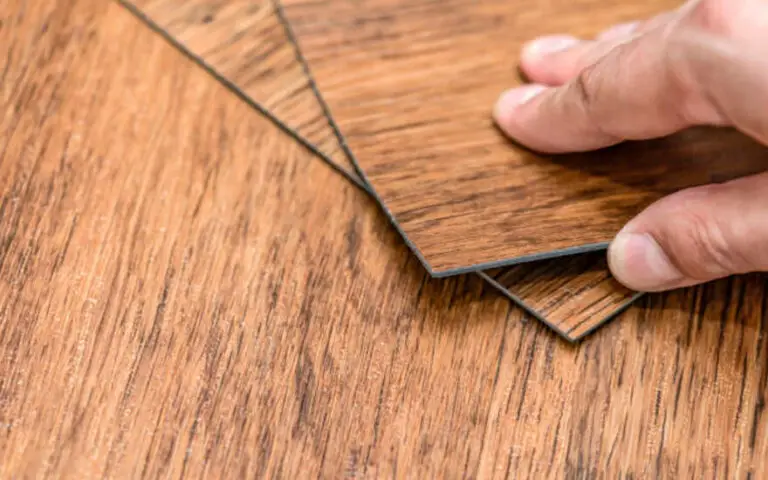I’ve rounded up some easy-to-follow maintenance tips to help you keep your bathroom floors sparkling clean.
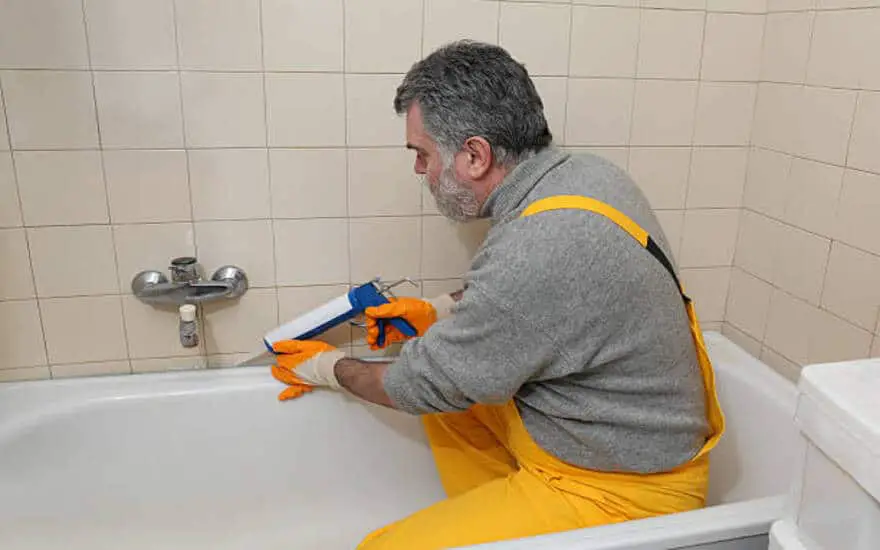
Bathroom flooring maintenance tips
Regular maintenance of your bathroom flooring is essential for keeping it looking its best. Regularly sweeping and vacuuming the bathroom floor can help remove dirt and dust before it builds up, and using a mop and mild soap can keep the floor free of grime. Avoid harsh chemicals on the bathroom floor, which can damage the surface. Mats and rugs at the bathroom entrance can also help trap dirt, preventing it from spreading around the room.
1. Regularly sweep and vacuum the bathroom floor
Sweeping and vacuuming your bathroom floor is essential to maintain cleanliness and appearance. Regularly sweeping and vacuuming the bathroom floor will help to prevent the buildup of dirt, dust, and debris that can accumulate over time.
Moreover, it will also help to remove any particles that could potentially cause damage to the flooring if left unattended. When it comes to vacuuming, use a vacuum cleaner suitable for your type of flooring and adjust the settings accordingly. Otherwise, you may end up scratching or damaging the surface of your bathroom floor.
2. Use a mop and mild soap to clean the floor
Mopping your bathroom floors is the best way to ensure they’re clean and germ-free. Be sure to use a mop with a soft head that won’t scratch the surface or leave lint behind. When mopping your bathroom floor, use mild detergent, soap, and warm water.
Avoid harsh chemicals or acidic cleaning products, as these can damage your tile or another flooring. For extra cleaning power, you can add a few drops of essential oil to your cleaning solution for added natural scent and antibacterial properties. Be sure to wring out the mop until it’s almost dry before mopping, and avoid saturating the floor with too much water. After mopping, use a squeegee to remove any excess water on the floor’s surface.
3. Avoid using harsh chemicals on the bathroom floor
You should avoid using harsh chemicals or abrasive cleaning products when cleaning your bathroom floor. These can cause damage to the surface of your bathroom floor, making it more vulnerable to scratches and stains.
Additionally, many of these harsh chemicals are unsafe for use in a bathroom and can harm your health if inhaled or ingested. Instead, opt for mild soaps and warm water to clean the bathroom floor, ensuring you rinse the floor thoroughly after mopping. This will help to prevent residue from being left behind and help keep your bathroom floor looking spotless.
4. Use mats and rugs at the entrance of the bathroom
It’s also important to use mats and rugs at the entrance of your bathroom. Not only will this help keep dirt and debris from tracking into the bathroom, but it can also help protect the floor from wear and tear. Make sure you select rugs with a non-slip backing, as this will provide an extra layer of safety in wet conditions.
Additionally, vacuum or shake out the rug regularly to keep it clean. Natural fiber rugs are ideal for bathrooms, provided they are kept from direct contact with water and the room is well-ventilated.
5. Wipe up spills immediately
It’s always a good idea to immediately wipe up any spills, especially on porous surfaces like marble. A product like Zoflora can help to remove tough stains and food spills. Cleaning up spills quickly will help avoid discoloration of the grout or tile.
Ensure that any water or other liquid spills are cleaned up immediately, as standing water can harm the bathroom floor. Be sure to dry the area with a soft cloth or towel after cleaning to prevent damage.
6. Avoid using acidic cleaning products
It is important to avoid using acidic cleaning products on bathroom floors as they can damage the surface and cause discoloration on some materials. Vinegar is usually the most acidic cleaning product used for bathrooms, but it is recommended to dilute it before use. Baking soda is also a great natural cleaner that can be used with vinegar for deeper cleaning.
For marble, granite, and natural stone tiles, it is best to avoid using vinegar and baking soda as they can be too abrasive. To maintain these surfaces, use mild detergent and hot water instead. After cleaning your floor, dry it thoroughly to prevent water spots.
7. Use a squeegee to remove excess water after showering
After sweeping and vacuuming your bathroom floor, you should use a squeegee to remove any excess water. This is especially important after showering, as the warm steam and moisture can lead to mildew and mold growth.
Squeegees are great for removing excess water from the bathroom’s walls, floors, and doors. It only takes a couple of minutes to do this, and it will ensure that your bathroom is free from any watermarks or buildup. Not only will this help prolong the life of your floor, but it will also help to ensure that your bathroom is clean and healthy.
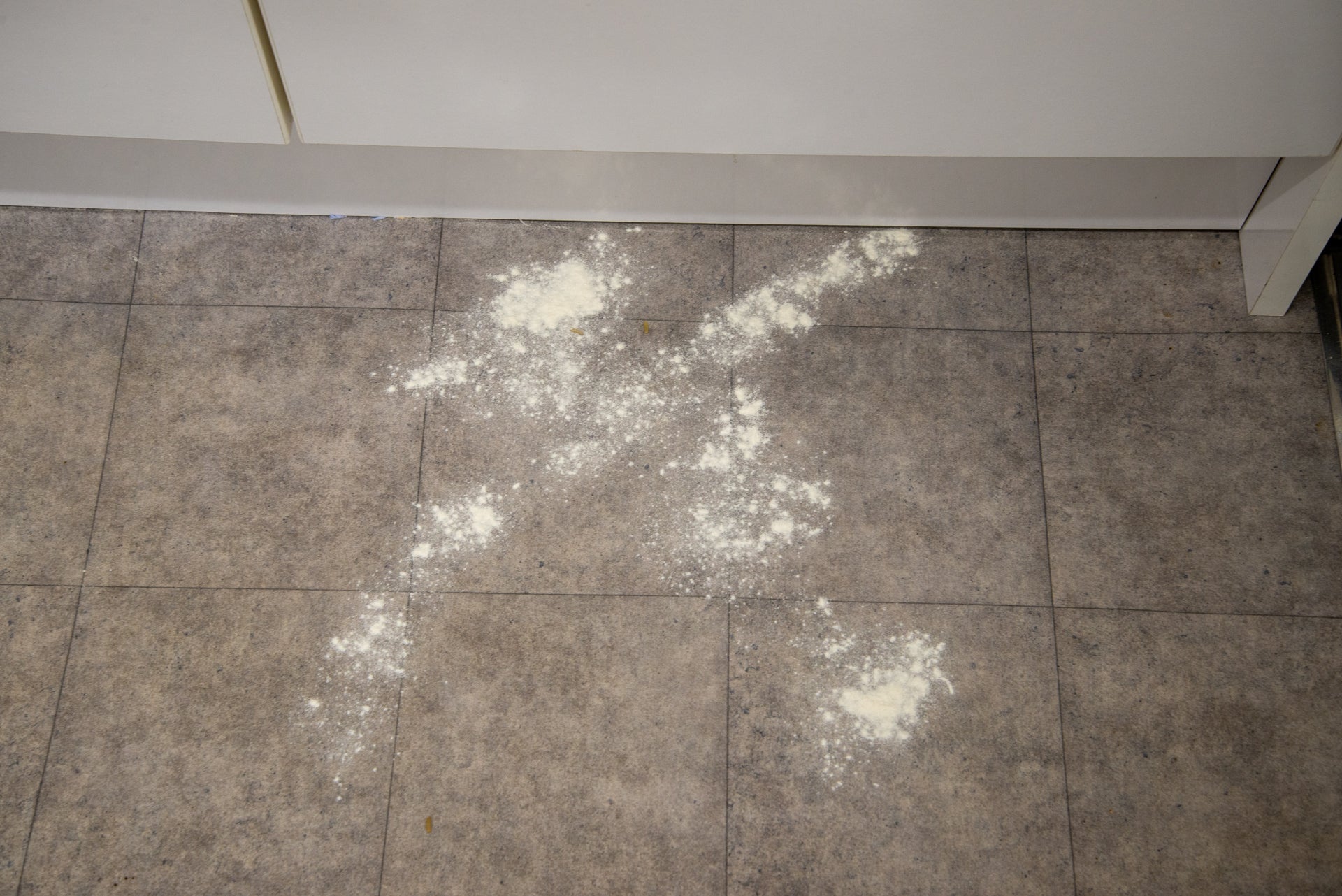
8. Reseal the grout regularly
Keeping your bathroom floor looking its best requires more than a regular mop and cleaning. You should also reseal the grout every six months to two years, depending on wear and tear. Not only will this make it easier to keep it clean, but it will also help protect against mold and mildew buildup.
When it comes to selecting the right grout sealer, you should go with one that is designed for your particular project. Enhancing sealers are great for whole tile applications, but if you’re sealing the grout, you don’t need to use them. Once you’ve applied the sealer, you’ll find that keeping your bathroom floor looking and feeling its best is much easier.
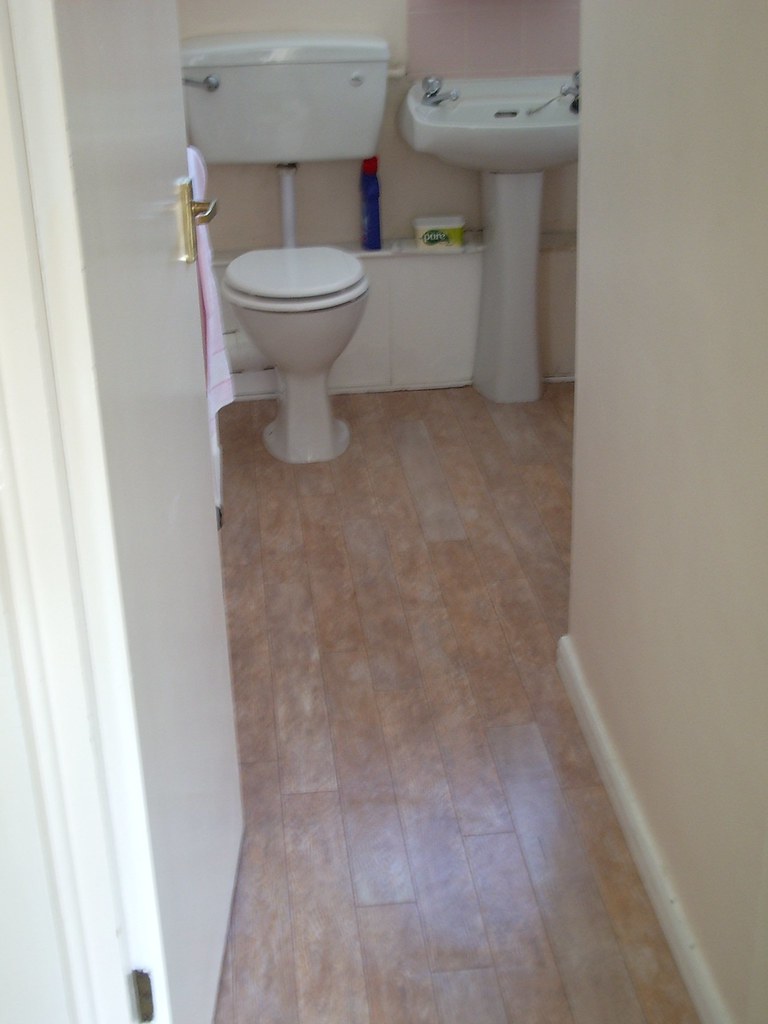
9. Carefully move furniture so as not to scratch or damage the floor
When moving furniture around in your bathroom, it is important to be careful to not scratch or damage the floor. Standard furniture legs can often scratch up floors, so it is important to use non-slip pads or trolleys when moving heavy furniture or appliances.
Wood floors require a different treatment from laminate, vinyl, and stone floors, so before you move the furniture, remember to clean your wood floors as much as possible. In this way, you will prevent scratches and dents. To avoid future scratches, add furniture pads under the legs of chairs and tables, especially if they get moved frequently.
Floor mats and rugs can also help protect the floor from scratches and dents.
10. Choose non-slip bathroom flooring for added safety
It is important to choose non-slip bathroom flooring for added safety. There are many options available, from ceramic to encaustic, porcelain to vinyl. Vinyl flooring is the most popular choice and offers practicality, affordability, and a wide range of style options.
Some vinyl products are specifically designed to provide slip resistance, and textured varieties are best avoided in wet conditions. Non-slip tile is another great option, as it not only adds beauty to the bathroom interior but also reduces the risk of slips and falls. Homeowners should also consider adding mats and rugs at the entrance of the bathroom to help prevent slips and falls.

How often should I mop my bathroom floor?
No matter what type of bathroom flooring you have, it’s important to keep up with regular maintenance. Maintaining your bathroom floor is key to ensuring it lasts as long as possible. Generally, it’s recommended to mop the floor at least once a week.
If your bathroom gets much foot traffic or you live in a wet climate, you may want to consider mopping the floor more frequently. It is also important to use the right cleaning products when mopping your bathroom floor. Avoid using harsh chemicals and instead opt for mild soap and warm water.
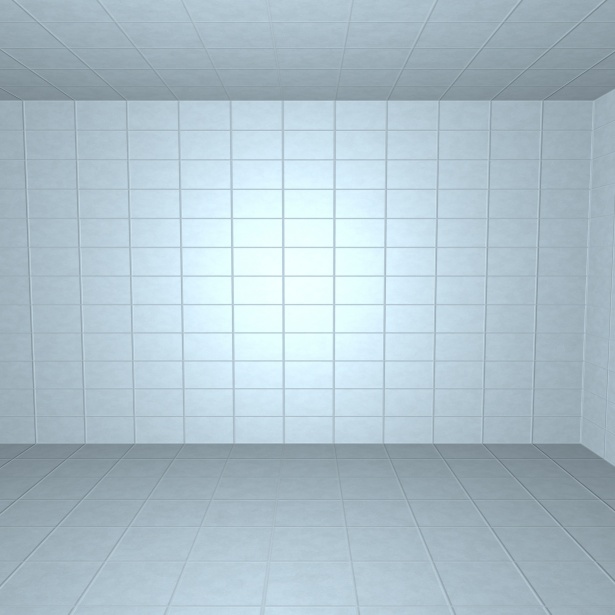
How do I clean my bathroom floor without Scrubbing?
There are several easy and effective alternatives if you’re looking for a way to clean your bathroom floor without scrubbing. Vinegar is a natural, all-purpose cleaner that removes soap scum and dirt. For tougher stains, try a mixture of baking soda and hydrogen peroxide.
Use a soft-bristle brush to scrub the floor, focusing on stained areas. You can also use an electric floor scrubber for quick and easy cleaning. For an even easier solution, use a microfiber mop and mild soap for everyday maintenance. Remember to wipe up spills immediately and avoid using harsh chemicals or acidic cleaning products on the bathroom floor.

Final Verdict
Keeping your bathroom floor clean and well-maintained is essential for a healthy and hygienic environment. Regularly sweeping, vacuuming, and mopping, and using proper cleaning products, mats and rugs can help keep your bathroom floor looking great.
Avoid harsh chemicals and acidic cleaning products on your bathroom floor, and remember to reseal the grout regularly. Lastly, make sure to choose non-slip bathroom flooring for added safety. With the right maintenance tips and regular care, you can ensure that your bathroom floor will last for many years.

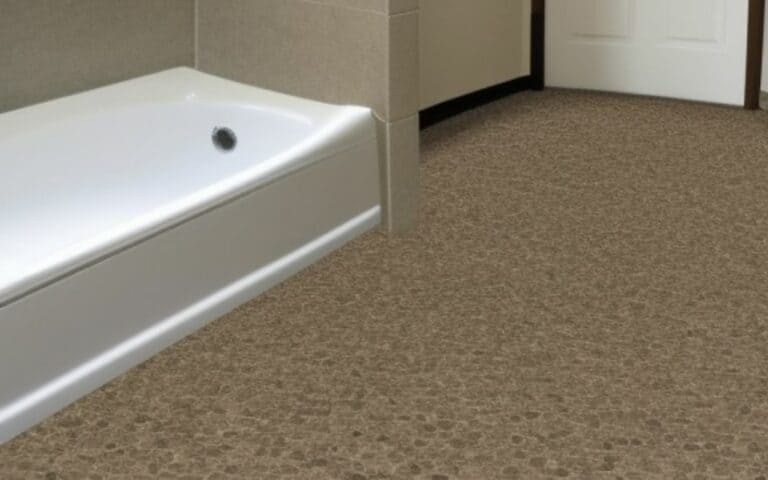
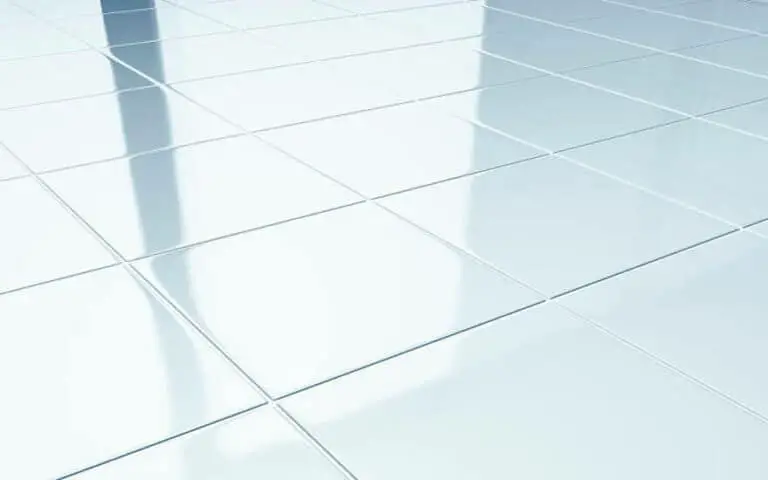
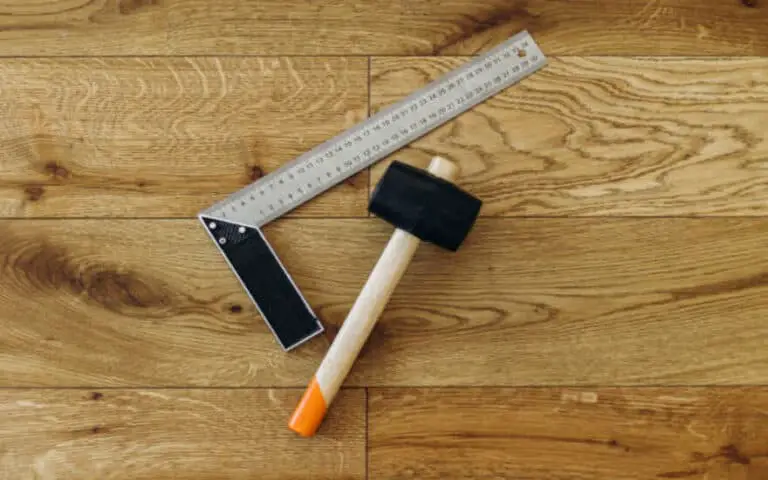
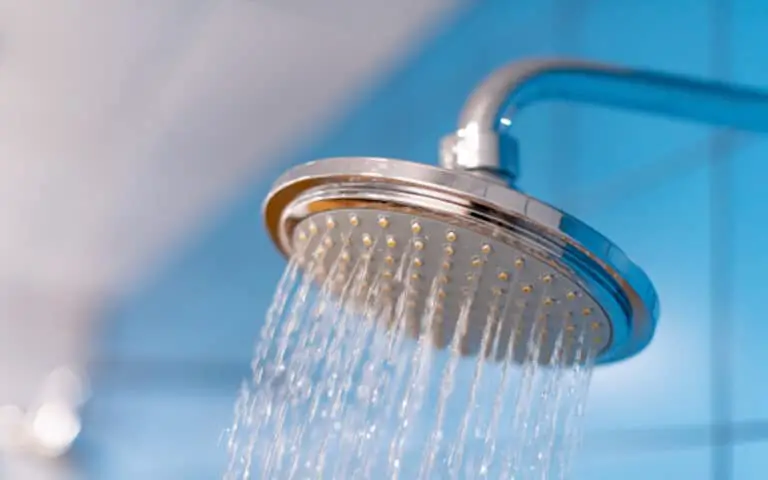
![How To Install Floating Vinyl Plank Flooring In A Bathroom [East Steps] 11 How To Install Floating Vinyl Plank Flooring In A Bathroom [East Steps]](https://homequeries.com/wp-content/uploads/2023/02/istockphoto-1423993715-612x612_880x550-768x480.jpg)
